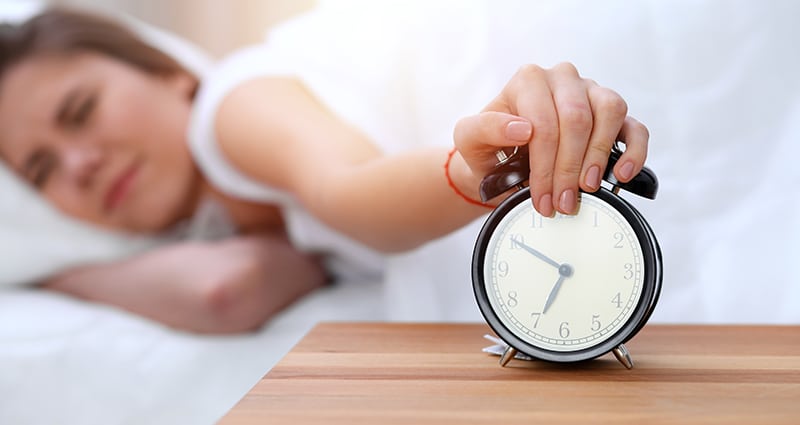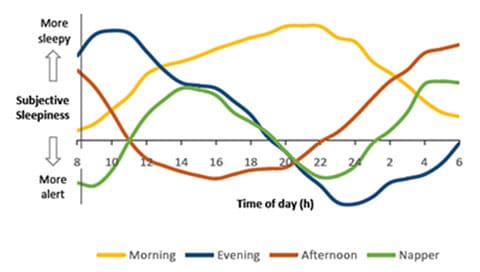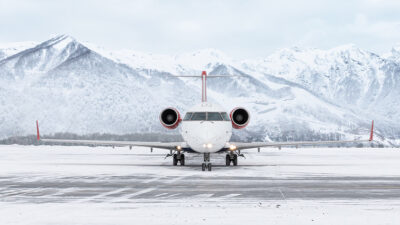Researchers Identify 2 New Chronotypes

Are you a night owl or an early bird? If this question has you struggling to answer for certain, rest assured: you probably belong to one of two new groups of chronotypes that researchers have just identified.
Scientists use the word chronotype to denote the biological characteristic of feeling more alert at certain times of day more so than others. For example, some people can wake up at 5am and spring out of bed like a cat to tackle the day, while others feel very groggy in the morning and rely on caffeine to get themselves going. Meanwhile, members of the first group—commonly known as “morning people”—tend to get very tired come evening, while those in the second camp feel most productive after dinnertime and have no trouble staying out late. These two well-known types of people are the Morning and Evening chronotypes, respectively.
New Insight on Sleep/Wake Rhythms
Well, as it turns out, not everyone fits these tidy categories. Some people feel tired both in the morning and in the evening. Others are alert at the beginning and end of the day, but experience a heightened spell of sleepiness just after lunchtime and also at around 4am.
In a research paper to be published this fall in the scientific journal Personality and Individual Differences,1 researchers from Russia and Belgium report on a community-based online survey they recently conducted of over 1,300 individuals aged 18 to 90, both male and female. Participants were asked about their sleep patterns and completed subjective surveys aimed at evaluating how sleepy they thought they would typically feel at different times of the day. Analysis of the data revealed four distinct groupings of individuals, as illustrated by the colored lines in the figure below.

Figure 1: Subjective sleepiness at various points of the day for four distinct chronotypes of individuals from a study population of n=1,305. Based on Figure 1A of Putilov et al., Personality and Individual Differences, vol. 148, page 78 (in press). In addition to the familiar Morning and Evening types, researchers found evidence of two new types they termed “Afternoon” and “Napper.”
Morning types are represented by the yellow curve in the figure—alert in the morning, then progressively more tired throughout the day until bedtime. Evening types follow the blue profile, which features a big spike of grogginess in the morning which gradually dissipates right through until midnight. So far, so normal.
But here’s where things get interesting: take a look at the orange line. This cohort of study respondents feels sleepy in the morning, is alert throughout the afternoon, and then starts getting sleepy again after about 10pm. This group has been termed the “Afternoon” type. And then we have the group represented by the green line, which seems to oscillate back and forth between states of sleepiness and alertness with a near-perfect sinusoidal rhythm. Probably owing to the pronounced sleepiness peak members of this group experience at around 2pm, the researchers dubbed them the “Napper” type.
Scheduling Implications of More Chronotypes
So why does all this matter? Aside from providing an “Aha!” feeling of recognition from those of us who identify with the Afternoon or Napper chronotypes, these study findings suggest that there is more granularity to the scheduling process than previously thought.
Traditionally, all crew are considered equally for duty assignments, without any regard for their natural biological preferences. But some schedulers and dispatchers recognize that certain members of the crew in the air operation prefer early morning duty start times, while others seem to have no problem conducting night flying. Taking such crew preferences into account when scheduling can contribute to a reduction in overall fatigue risk across the whole operation.
Technology and Fatigue-Optimized Scheduling
Now, with four chronotypes in play, the calculus gets a lot more complicated. Fatigue-optimized crew scheduling can seem like a pipe dream, especially with all the other operational factors that demand attention and decisions in real time.
This is a classic situation where technology can make a compelling difference and deliver. At Pulsar Informatics, we have been working for nearly 20 years on data-driven technologies and empirically validated mathematical models to help organizations measure and manage the fatigue risk in their operation.
Developed with funding in part from NASA and the FAA, our Fatigue Meter platform applies the latest science to pinpoint, both in advance and in real time, which schedules exhibit the most fatigue risk. We are now working on refining our Aviation Fatigue Meter mobile app to deliver individually tailored trip-planning tools, so that your air crew can be informed about and apply best practices in their own work-life schedules.
Our technologies support fitness for duty and promote safety, regardless of whether you are someone who tends to feel sleepy in the morning, in the evening, or… all the time (“Parent” chronotype, anyone?).
Resources
1 See www.sciencedirect.com/science/article/abs/pii/S0191886919303071.

Pulsar Informatics is an IS-BAO I3SA certified company specializing in systems that help organizations reduce fatigue-related risk and achieve peak performance. Fleet Insight enables safety managers and schedulers to proactively evaluate fatigue across their entire operation’s schedule and formulate mitigation strategies. Fatigue Meter Pro Planner is used by pilots, flight attendants, and maintenance personnel to evaluate their individual flight and duty schedule.
http://www.pulsarinformatics.com
© 2025 Pulsar Informatics, Inc.. All Rights Reserved.
Next ArticleRelated Posts

Mitigating Risk – Amidst the Chaos
There have been more high-profile aviation accidents in the last few months than in the last few decades. As we mourn those we have lost and aim not to make assumptions before final reports are completed, we must focus, personally and professionally, on assessing the risk of something similar happening within our aviation enterprises.

Let’s Get Personal (About Risk)
Aviation loves to talk about risk management. Insurance companies, manufacturers, and organizations all fully embrace the concept and know that to make it work on the line, we must get people at all levels and from all functional areas to embrace it. Tools such as the Flight Risk Assessment Tool (FRAT) are noble attempts, but at the core of it all lies the simple fact that people, as individuals, view risk differently.

